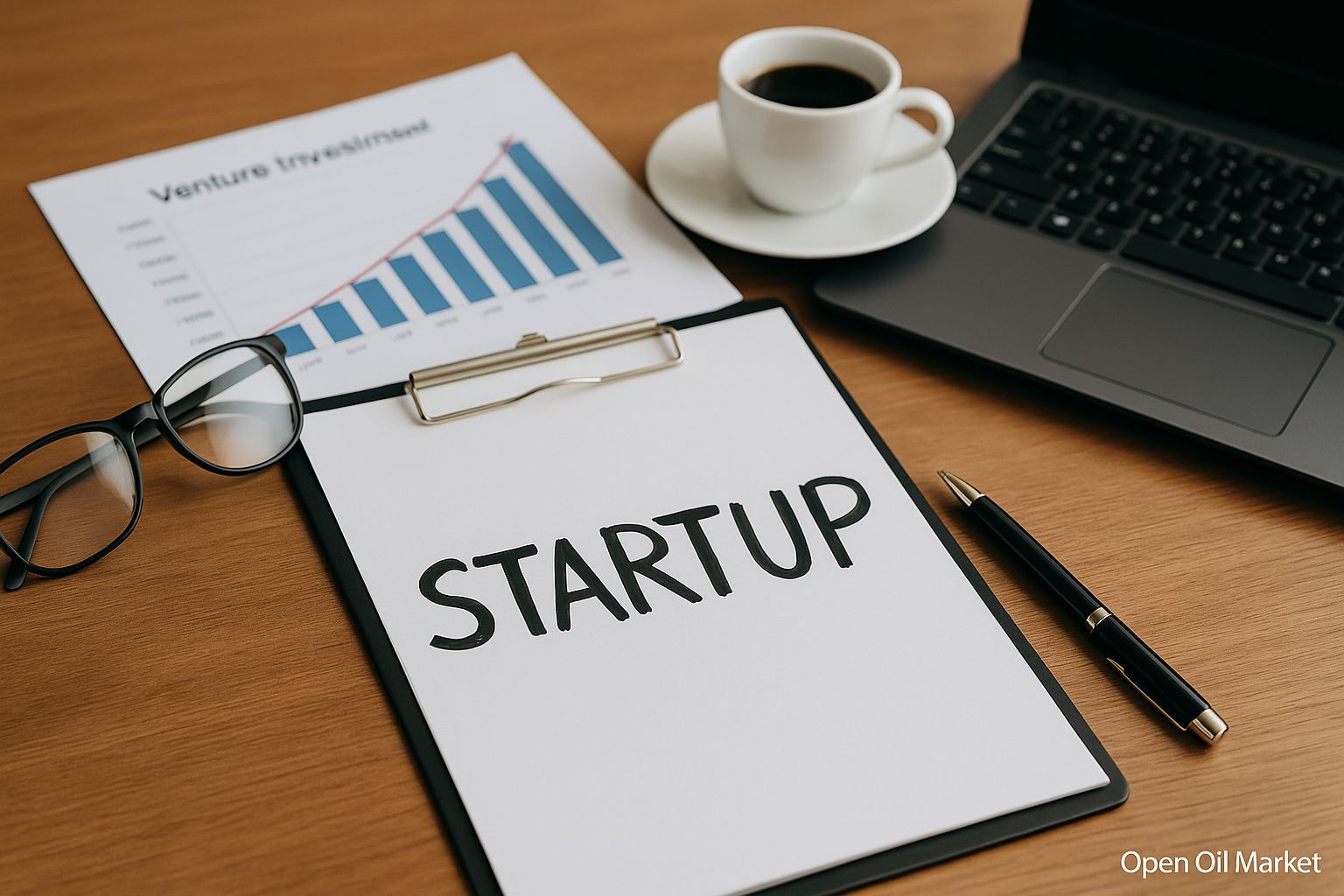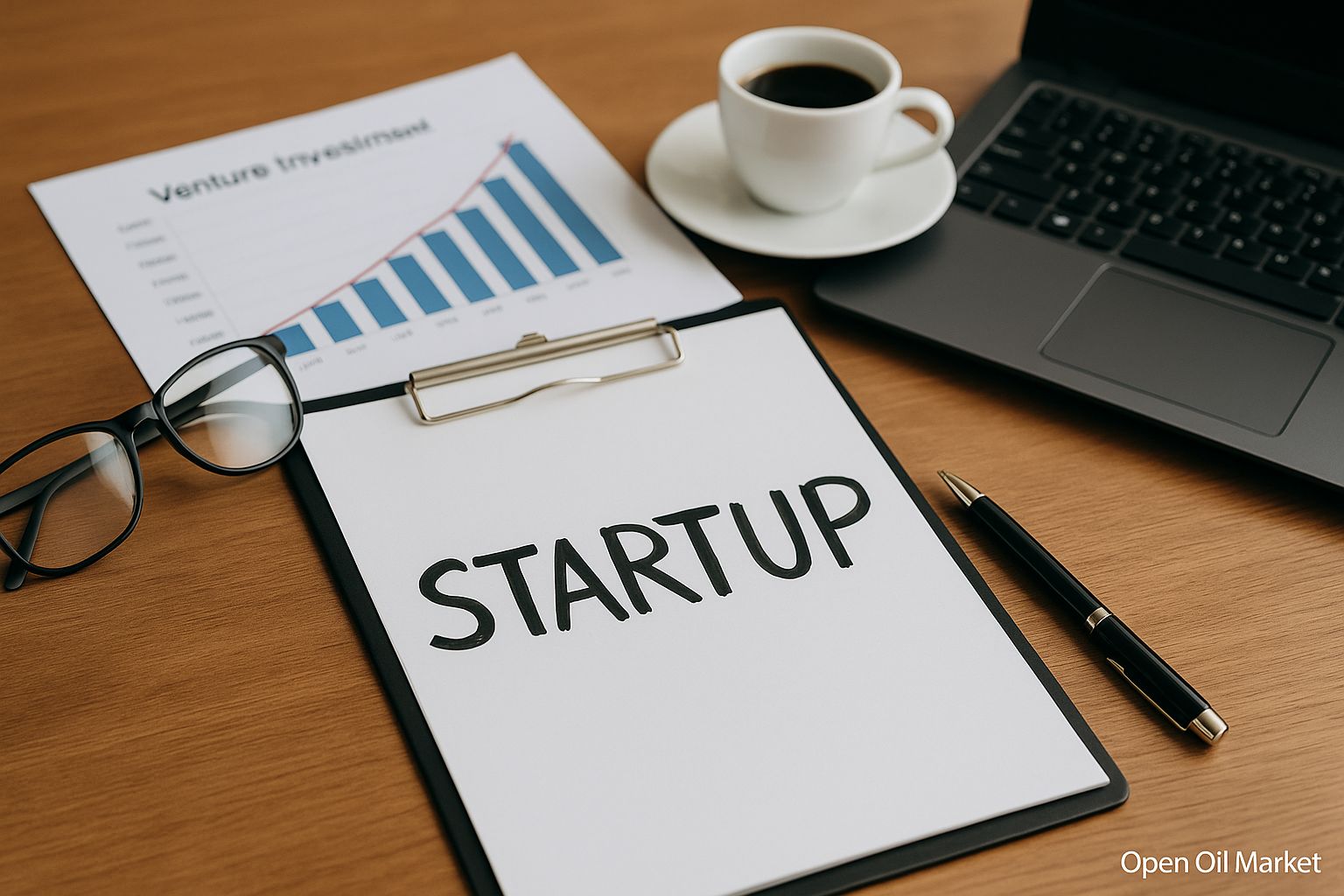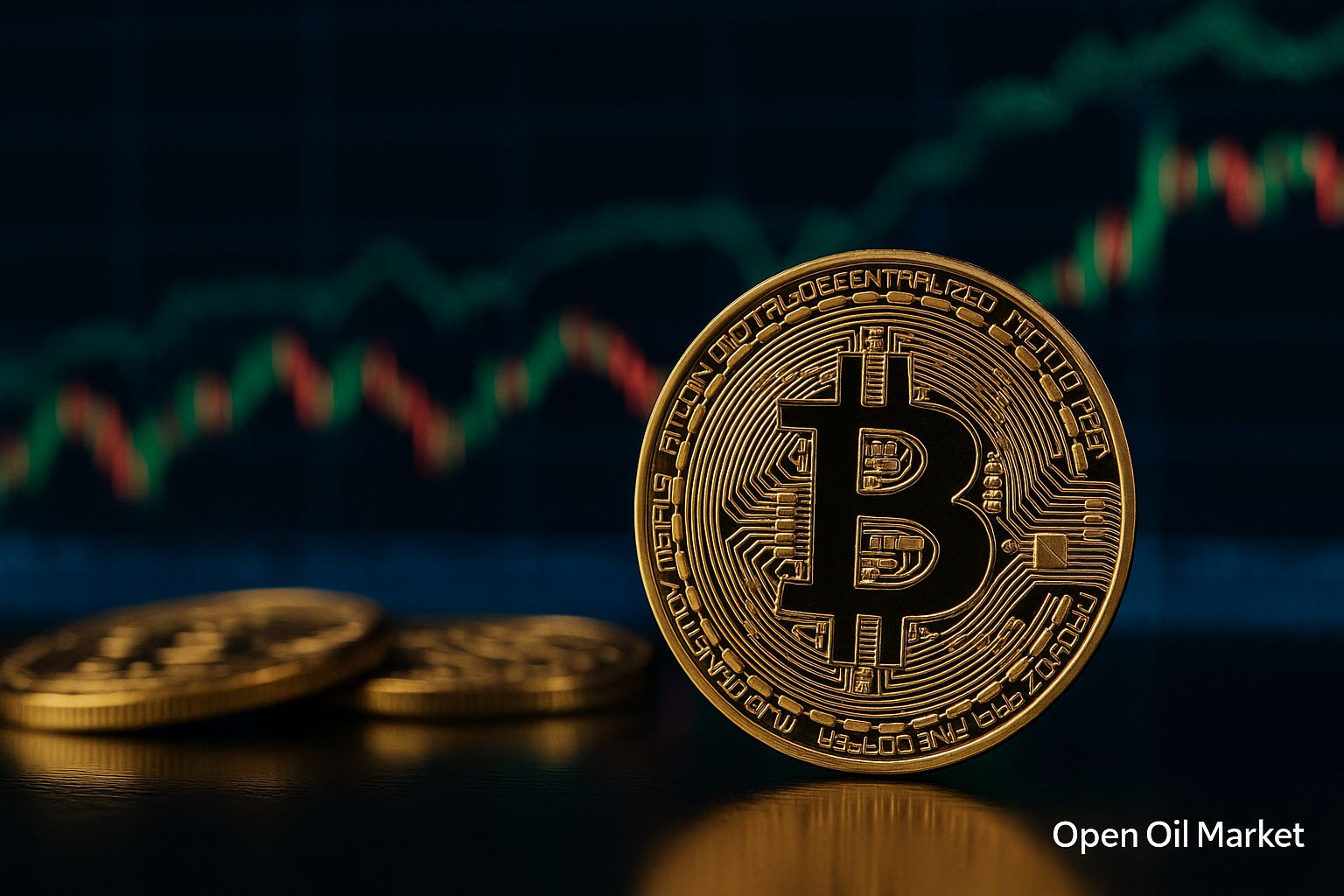
Current News in Startups and Venture Investments as of August 16, 2025: Record AI Mega-Rounds, New Unicorns, IPO Revitalization, and Global Venture Capital Expansion
By mid-August 2025, the global venture capital market shows a confident recovery after several years of decline. Investors worldwide are once again actively financing tech startups: record-breaking deals are being made, and the prospects of companies going public are back in the spotlight. Major funds and corporations are resuming substantial investments, launching new venture programs, while governments across various countries are ramping up support for innovative businesses. The first half of 2025 marks the most successful period since 2021 in terms of total venture capital investment. The overall inflow of capital into the sector has significantly increased, largely due to a series of massive funding rounds in the field of artificial intelligence.
Venture activity currently spans all regions. The United States remains a leader (with a substantial portion of investments directed towards the AI sector), the Middle East has doubled its startup financing, and Germany has surpassed the United Kingdom in investment volumes for the first time in a decade. The situation in Asia is heterogeneous: while China experiences a decline, India, Israel, Southeast Asia, and Gulf countries are showing growth and attracting record capital. The startup ecosystems in the CIS countries are also attempting to catch the wave of recovery despite external constraints. Overall, a new global venture boom is taking shape, though investors continue to approach deals selectively and cautiously.
Below are the key events and trends shaping the venture market agenda as of August 16, 2025:
- Return of Mega Funds and Major Investors. Leading players are forming record venture funds and increasing investments, revitalizing the market with capital and boosting risk appetite.
- AI Mega-Rounds and New Unicorns. Unprecedented volumes of investment are pushing startup valuations to incredible heights, particularly in the artificial intelligence segment.
- Revitalization of the IPO Market. Successful public offerings by tech companies and new applications confirm that the much-anticipated "window" for exits has reopened.
- Diversification of Industry Focus. Venture capital is not only flowing into AI but also into fintech, climate projects, biotechnology, defense technologies, and even crypto startups, broadening market horizons.
- Wave of Consolidation: Growth in M&A Transactions. Major mergers, acquisitions, and strategic investments are reshaping the industry landscape, creating new exit opportunities and accelerating company growth.
- Global Expansion of Venture Capital. The investment boom is reaching new regions—from the Gulf countries and South Asia to Africa and Latin America—where their own tech hubs are forming.
- Local Focus: Russia and CIS Countries. Despite restrictions, new funds and initiatives are emerging in the region to support local startup ecosystems, increasing investor interest in local projects.
Return of Mega Funds: Big Money Back on the Market
The largest investment players are making a triumphant return to the venture arena, indicating a growing risk appetite. Japanese SoftBank has launched Vision Fund III with a volume of about $40 billion, focused on cutting-edge technologies (primarily artificial intelligence and robotics). Concurrently, sovereign funds from the Gulf countries are ramping up their activities—injecting billions of dollars into innovative projects and developing state mega-programs to support the startup sector, thereby creating their own tech hubs in the Middle East. Simultaneously, several new venture funds (including corporate ones) are launching globally, attracting significant institutional capital into high-tech sectors.
Leading Silicon Valley investors are also strengthening their presence. For instance, venture firm Andreessen Horowitz (a16z) is assembling a mega-fund of around $20 billion, primarily aimed at investing in late-stage American AI startups. Overall, the cumulative reserves of "dry powder" among funds have reached record levels: in the US alone, over $300 billion of uninvested capital is ready to be deployed with the return of investor confidence. This influx of "big money" fills the ecosystem with liquidity, providing resources for new funding rounds and supporting the growth of promising companies. The return of mega funds and large institutional investors not only intensifies competition for the best deals but also instills confidence in the industry regarding further capital influxes.
AI Mega-Rounds and a New Wave of Unicorns
The field of artificial intelligence remains the main driver of the venture boom in 2025, showcasing record levels of startup funding. Practically every week sees new mega-round investment announcements, confirming AI's status as the primary "magnet" for venture capital. For instance, the Canadian startup Cohere raised $500 million at a valuation of $6.8 billion. Moreover, OpenAI secured approximately $8.3 billion in new funding, elevating its valuation to a staggering $300 billion. Amid such deals, a new generation of unicorns—young companies valued at over $1 billion—is emerging, with Europe, India, and the Middle East producing their own unicorns thanks to active local funds.
Revitalization of the IPO Market: The Exit Window is Open
After an extended pause, the market for initial public offerings is reviving. Successful IPOs of major tech startups signal that the exit window for venture investors has reopened. In July, the company Figma made a sensational debut on the stock market, with its shares soaring more than three times from the offering price, becoming one of the most impressive tech IPOs in recent years. This success has restored faith in the potential for public exits for other unicorns that have been waiting for the right moment to go public.
In the first half of 2025, more than 150 companies worldwide went public. Among the latest successful listings are fintech giant Chime, crypto company Circle, and even the aerospace defense project Voyager Space—all of which debuted successfully in the public market. The stocks of these companies surged significantly in the early days of trading, confirming high investor demand for new tech issuers. Furthermore, a number of well-known startups have already filed for IPOs in the latter half of the year, hoping to take advantage of the favorable market conditions. 2025 could be a breakthrough year for the resurgence of IPO market activity.
Diversification of Venture Capital Industry Focus
Despite AI's dominance, venture investors are exploring other directions, diversifying their portfolios. The fintech sector is seeing a rise: in addition to successful IPOs of neobanks, major funding rounds are attracting startups in payments and corporate finance. Interest in climate technologies is also growing—investors are funding decarbonization projects, renewable energy, and new materials for the "green" economy. For instance, the Swiss climate startup Climeworks recently raised $162 million to develop CO2 capture systems (with the company having already raised over $1 billion). Biotechnology companies are also regaining the attention of venture funds: for example, the American firm Centivax raised $45 million for the development of a universal flu vaccine.
The defense technology sphere has also become more active. The escalation of geopolitical tensions is driving investments into startups focused on unmanned systems, cybersecurity, and communication technologies for military purposes. The crypto industry is gradually recovering as well: as the cryptocurrency market stabilizes, investors are once again showing interest in blockchain projects. Notably, Circle's successful IPO has bolstered confidence in the prospects for infrastructure crypto startups. Consequently, in 2025, the venture market has become much broader in industry terms, extending beyond the AI segment and opening new growth avenues—from finance and energy to medicine and defense.
Wave of Consolidation and Growth in M&A Transactions
Amid the investment boom, M&A activity is also on the rise. Major tech corporations and high-value startups are rushing to acquire promising projects, preferring purchases over developing technologies from scratch. In the field of cloud security, Google is close to a record deal to acquire Israeli startup Wiz for approximately $32 billion—potentially the largest startup acquisition in history. Tech giant Meta invested $14 billion in Scale AI, acquiring about 49% of its shares (valuing the startup at around $28 billion) to strengthen its position in data and AI model training. Even leaders in the AI market are expanding through acquisitions: OpenAI, for example, acquired a startup focused on AI devices (from designer Jony Ive) for $6.5 billion to bolster its hardware direction.
The consolidation wave is affecting other segments as well. In the fintech industry, Ripple announced its acquisition of the platform Hidden Road (a prime broker for institutional investors in the crypto market) for $1.25 billion, which will enable it to enter the brokerage services market. In the defense sector, Californian startup Anduril acquired Irish firm Klas, which creates secure communication networks for military applications, thereby expanding its security portfolio. The surge in M&A transactions not only provides venture funds with much-anticipated exits but also reshapes the industry landscape, consolidating players and accelerating the adoption of new technologies.
Global Expansion of Venture Capital: A Boom Spreading Across Regions
In 2025, the geography of venture investments is rapidly expanding. In addition to traditional centers—the US and China—the investment boom is reaching new markets worldwide. In the Middle East, Gulf countries are directing record sums into startups through sovereign funds, forming large tech hubs in the UAE and Saudi Arabia. In South Asia, Indian and Southeast Asian ecosystems are booming, setting record levels of venture investments. Africa is also making its presence known: the success of several projects from Nigeria and Kenya is drawing global investor attention to the continent.
- Middle East (MENA): startups in the region attracted ~$2.1 billion in the first half of 2025 (+134% year-over-year), with the largest contributions to growth coming from the UAE and Saudi Arabia.
- Africa: the volume of startup financing reached ~$1.35 billion over the 6 months of 2025 (up 78% year-over-year); record deals have been recorded in Nigeria, Egypt, and Kenya.
- Latin America: venture financing in the region increased by 16% in the second quarter of 2025 (quarter-over-quarter), with Mexico surpassing Brazil in investment volumes for the first time since 2012, thanks to major rounds (e.g., fintech Klar raised $170 million).
In Europe, the positions of continental players are strengthening: Germany, France, and Northern European countries are increasing their venture investments, while growth in the UK has slowed post-Brexit. In Asia, metrics differ: amid a decline in China, capital is being attracted at steadily high rates in India, Southeast Asia, and Israel, which has reached a two-year high in deal-making. Even in less developed markets in Africa and Latin America, their own unicorns are emerging, and authorities and corporations are actively supporting technological initiatives. Thus, the global venture ecosystem is becoming more distributed: new innovation centers are gaining strength beyond the usual startup capitals.
Local Market: Russia, CIS, and New Projects
Despite geopolitical upheavals, the venture market in Russia and CIS countries continues to develop. New funds and corporate accelerators are emerging with the participation of banks and large companies. Development institutions (such as the Skolkovo Foundation) offer grants, tax incentives, and co-investment programs, partially compensating for the outflow of Western capital. Local investors and funds are increasingly focusing on the domestic market and partners from friendly countries in the Middle East and Asia, filling the gap left by departed players.
A notable example is the Krasnodar food tech startup Qummy, which attracted 440 million rubles in investments at a valuation of about 2.4 billion rubles and announced plans to go public in the coming years. Moreover, several major financial institutions have launched their own funds to support technologies: for instance, PSB created a venture fund of 12 billion rubles, investment company Kama Flow established a fund of 10 billion rubles, and the Tinkoff ecosystem is developing the T-Invest fund to invest in rapidly growing Russian projects. In 2025, authorities officially authorized the return of foreign capital (from “friendly” countries) to deals with Russian tech companies, potentially opening doors for new financial inflows into the sector.
Although the absolute volumes of venture investments in the region remain modest, they are growing steadily. According to the Russian Venture Company (RVC), in the first half of 2025, about $80 million was invested in Russian tech startups—approximately 70% more than a year earlier (but still a fraction of the global market). Local investors are focusing on projects in the fields of artificial intelligence, import substitution, cybersecurity, and B2B services. Gradually, a new wave of tech entrepreneurs is forming capable of building businesses in challenging conditions. The regional venture ecosystem is striving to utilize the global uplift to lay the foundation for future growth, even if it requires more time and internal support.




